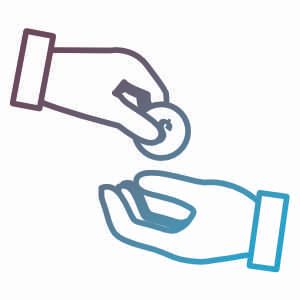Pros and Cons of Different Rent Collection Methods
Rent Collection Methods Have Positives and Negatives

When the first day of the month rolls around, it’s time to collect rent. Whether it’s your first time collecting rent, or if you are interested in changing how you collect rent, there are many methods you can choose from. Read on to discover the pros and cons of these rent collection methods.
Paper Checks
Paper checks are a great choice because they are secure, reliable, and convenient for you and the tenant. Check payments are made directly from the tenant to you and provide a physical record of the payment. Checks also remove a third party from being involved in the transaction, which will help you avoid unwanted fees.
One of the biggest drawbacks to collecting rent by checks is the time it takes to process each check. Processing a paper check requires several steps, which can be time-consuming and costly. Also, paper checks carry a risk of being bounced, which can incur additional fees for you. Like cash payments, checks can easily be lost or stolen.
Online Payments
The major positive of online payment for rent collection is convenience. Tenants can pay rent quickly and easily online with just a few clicks. This saves time, energy, and money that would otherwise be wasted on having to mail or deliver the rent check in person. Online payments also eliminate the need to keep large amounts of cash and checks on hand, which can be a security risk.
Online payments are also accurate, can be tracked in real-time and tenants can be notified when their rent has been received. This eliminates the need for you to manually check for payment accuracy, such as if the amount paid is correct.
One of the cons of collecting rent by online payment is its potential for fraud. In an online payment system, tenants must provide their financial information which is vulnerable to being hacked or stolen. Also, you may have to pay fees for an online payment system, which will add up over time. If you’re on a tight budget, these fees are less than ideal.
Automated Payment
Automated payment systems, such as Zelle or Venmo, make it easy to collect rent every month without having to manually process payments. You can set up the system to collect rent on the same day of each month and tenants can set up their payments just once so that their rent is paid on time. Automated payments also provide you with clear records that can be used for tax purposes or in the event of a dispute with a tenant.
One of the drawbacks of automated rent payment is the lack of flexibility it provides to tenants. Some tenants may not have access to a payment system that allows for automated payments.
Cash Payments
One of the biggest pros of cash payments is the ability to track and keep your own records. When tenants pay you in cash, you can easily store the money anywhere you like and keep track of who has made payments. Also, collecting rent by cash removes the possibility of bounced checks or other issues that can arise with other forms of payment. It also eliminates the need to pay any processing fees and provides you with immediate access to the money.
The main risk of collecting rent in cash is the possibility of theft or loss. Cash offers no safeguards for you if the tenant doesn’t make a payment, as there is no record of the transaction. Cash is also much more difficult to track than other forms of payment, such as checks or electronic transfers. Another con of collecting rent by cash is the potential for accepting counterfeit bills, which can result in a loss for you if you don’t catch it in time.
Conclusion
Ultimately, the best rent collection method for your property will depend on your specific needs and preferences. If you’re looking for a fast and secure method, then online payments might be the best option. If you’re looking for an automated system that requires less in-person contact, then automated rent payments might be the best choice. If you have more questions about what may be the best way to collect rent, consider calling us at (562) 888-0247, or feel free to fill out our free rental analysis to see what your rental could yield today.





